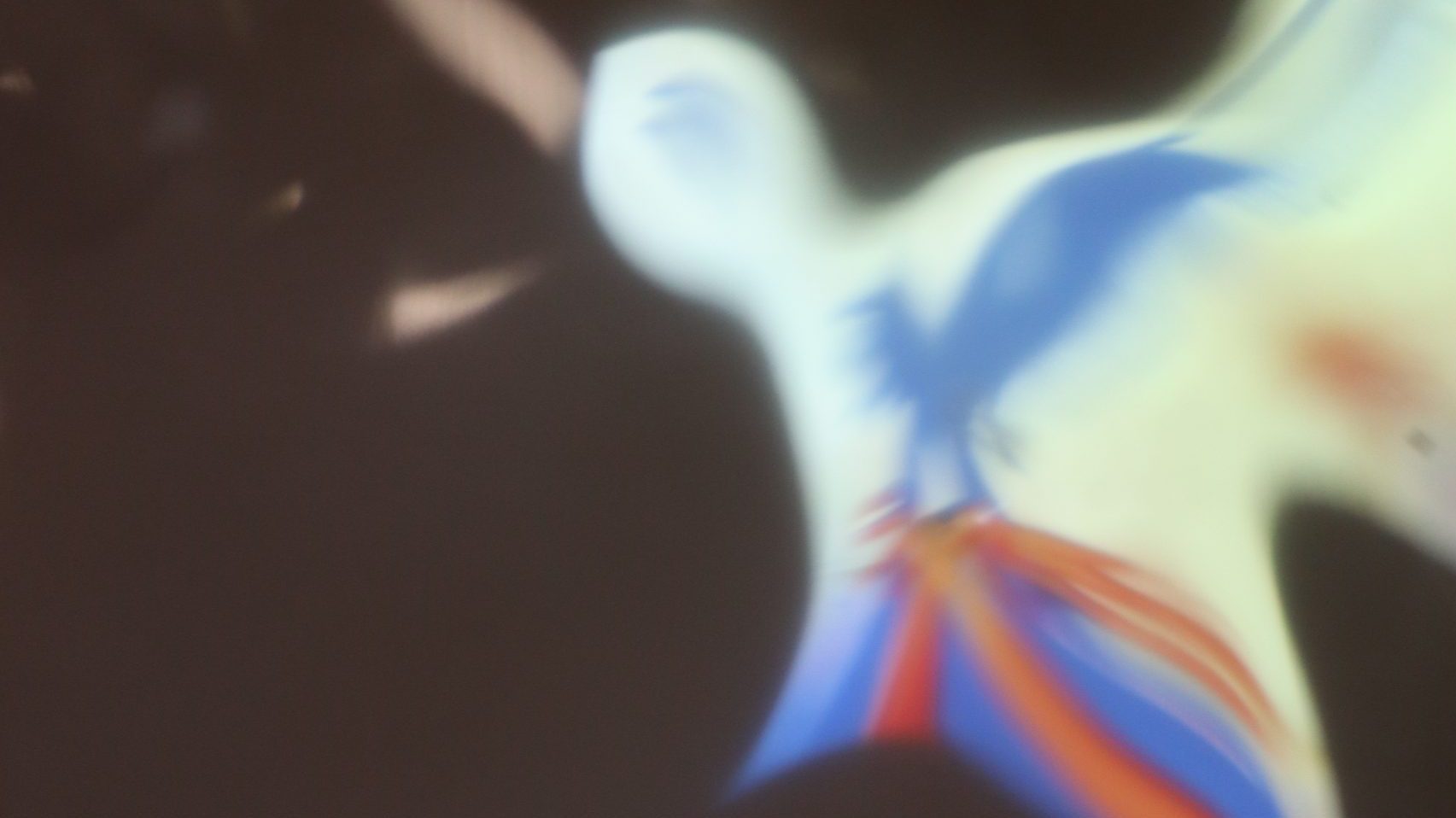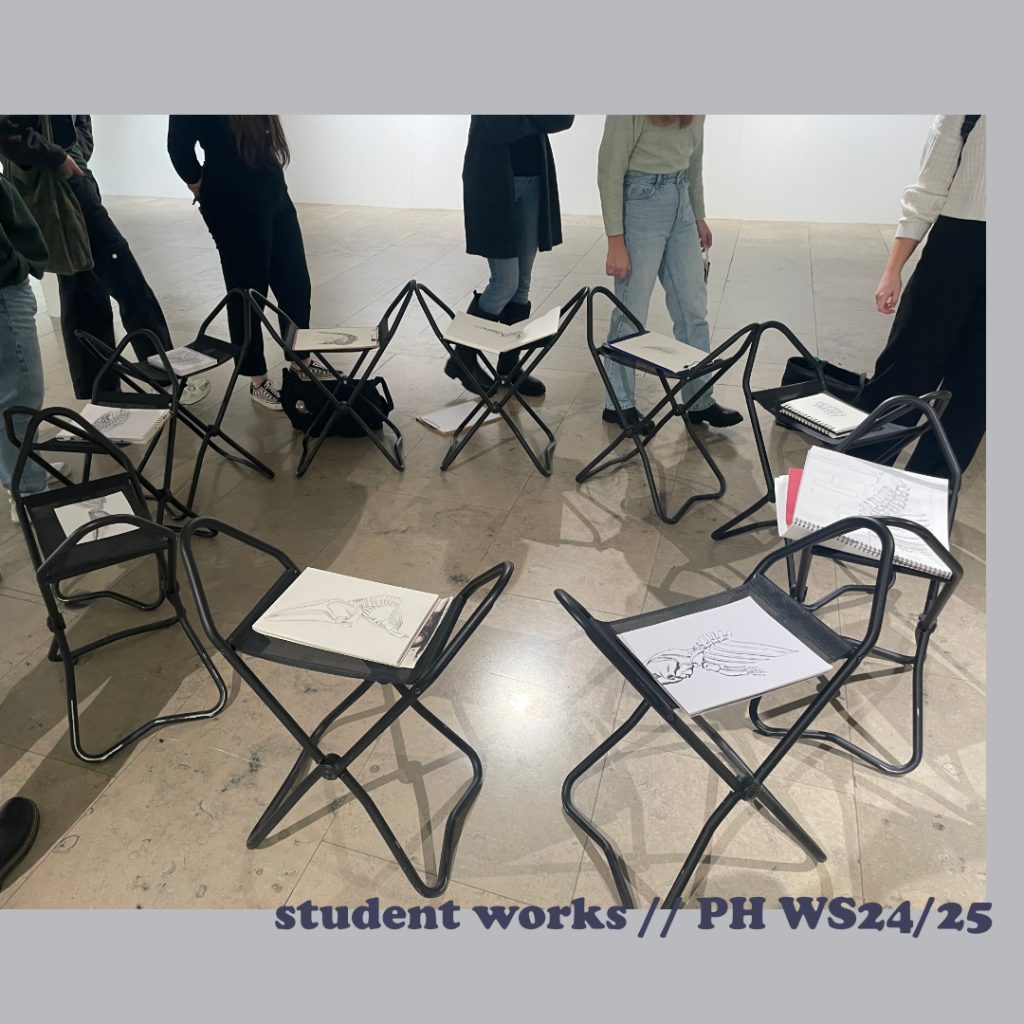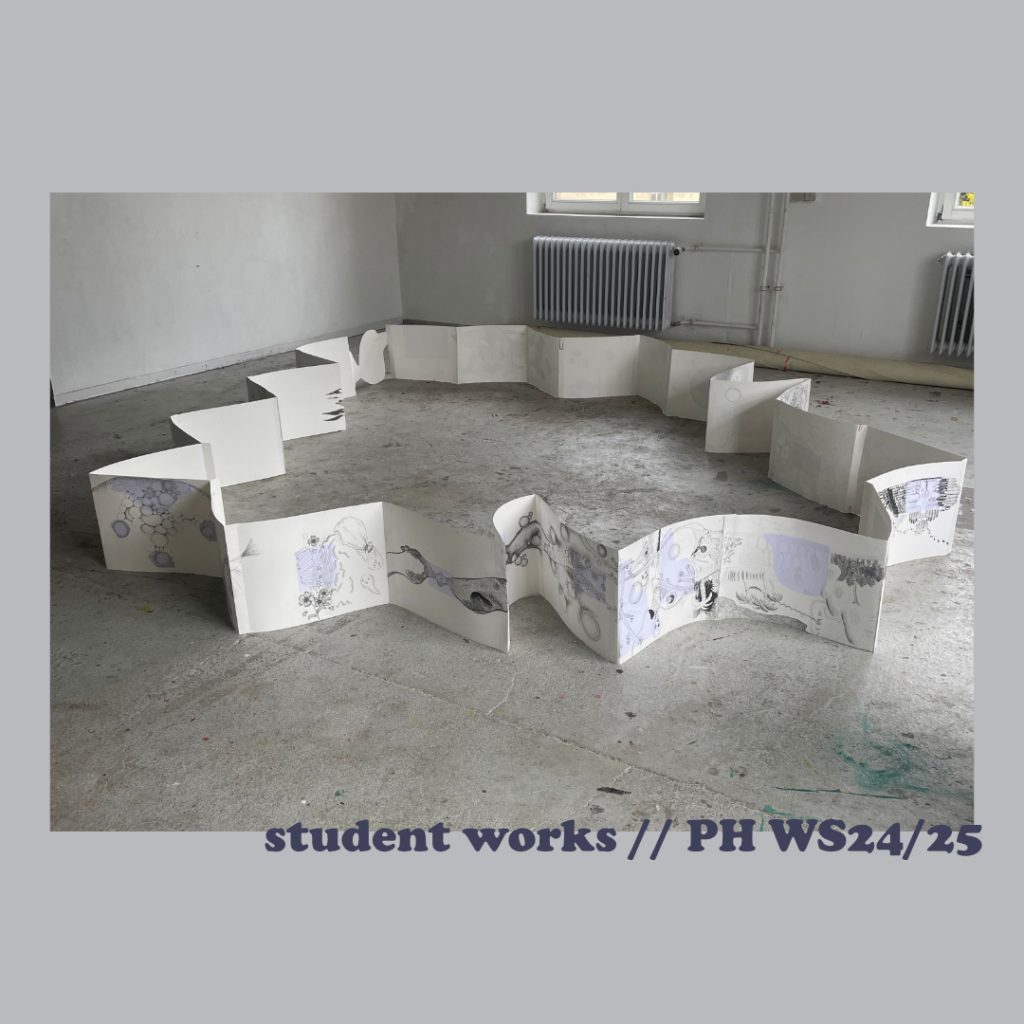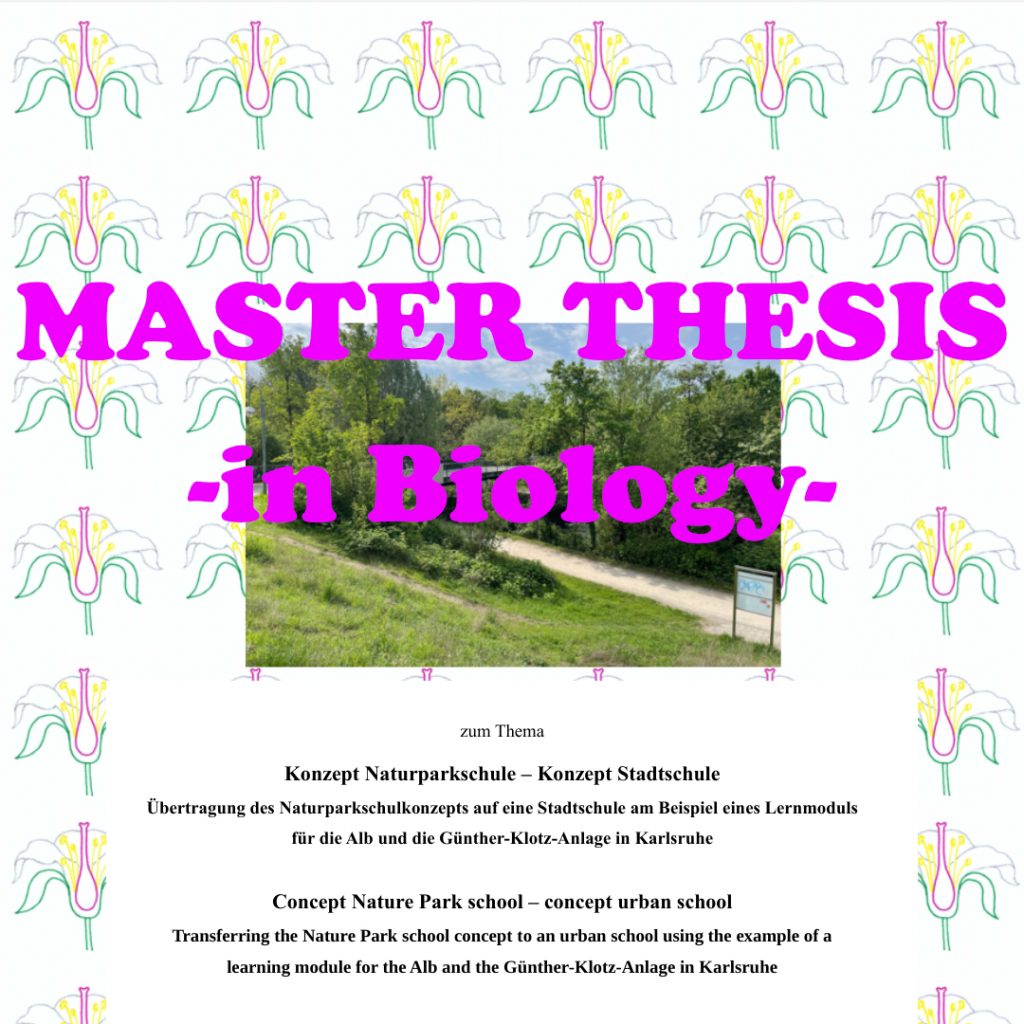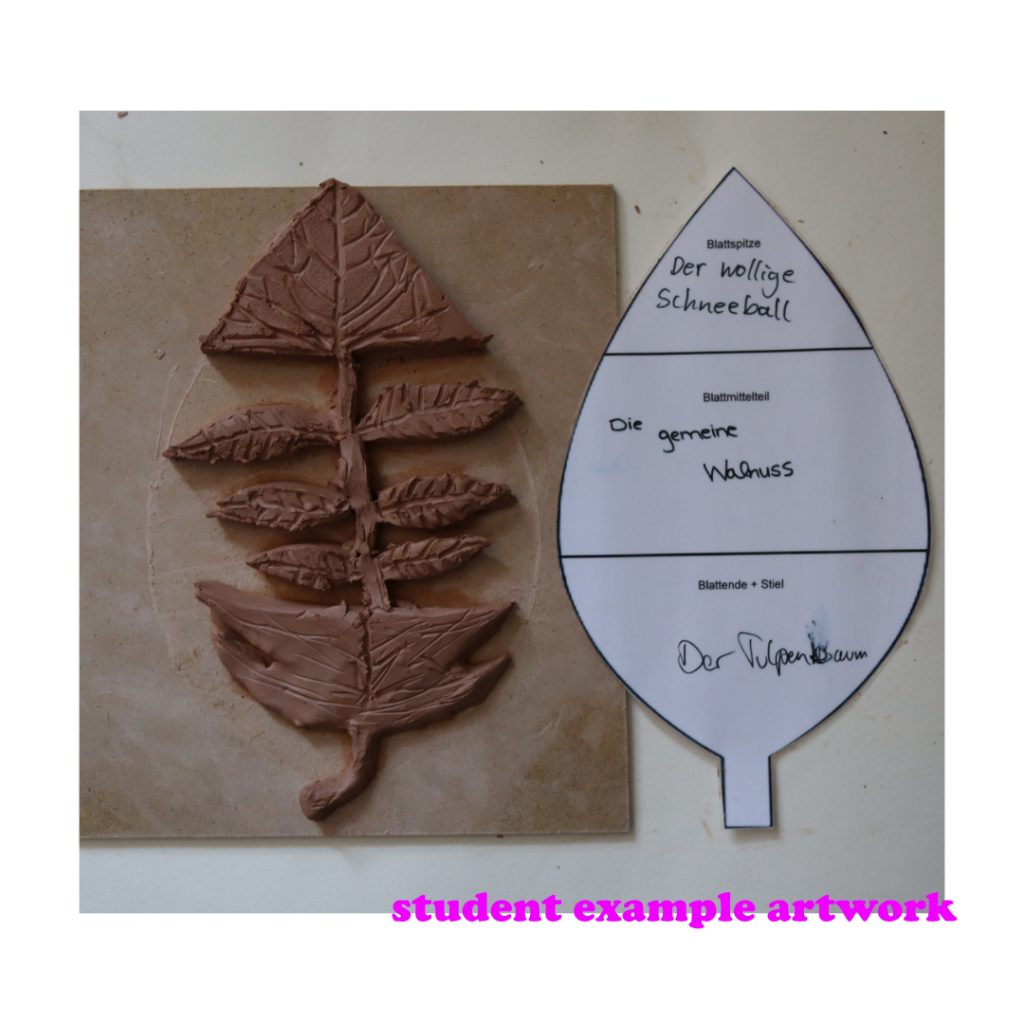
In my artistic teaching practice, I aim to bridge the gap between the emotional and tactile methods of Fine Art and the more scientific approaches of Biology and Chemistry. Interdisciplinary, nature-based, and project-oriented teaching is still not fully realized in secondary schools at the honors level (Gymnasium). In my approach, I strive to develop new methods of teaching in an inclusive, dynamic, and workshop-like classroom (or outdoor natural and cultural) environment, where the barriers between the roles of teacher and student break down. This allows us – hopefully – to learn together in an emotional, artistic, and scientific learning space.
Guest lecturer for the Drawing course
Master Thesis in Subject Didactics in Biology
Abstract
“Education for Sustainable Development” (in German: BNE) was added in 2016 as a guiding perspective for secondary schools (the German gymnasium) in Baden-Württemberg’s education plan. This was in accordance with the decisions of Agenda 2030 to consider BNE as one of the 17 Sustainable Development Goals (SDGs). BNE involves dealing with global, local, environmental and development issues, and the informed actions and decisions that should be taken to solve them. However, a “structural implementation into the formal education system has not yet been sufficiently successful.” (Huckle and Wals 2015, Brock 2018) Nevertheless, Biology classes, in particular, have seen an increased engagement with BNE principles. (Hemmer et al., 2023) In many regular school curricula BNE is not explicitly held as a basis for teaching – not even for Biology classes. Nature Park schools commit to teaching in accordance with BNE principles by trying to teach regional sustainability, modularly, in cooperation with project partners. Nature Park schools are limited in that they may only be located within a Nature Park. The aim of this work is to develop a module that
corresponds to the BNE adjacent concept of the Nature Park school and to apply it in the 8th grade of the urban school; Lessing Gymnasium Karlsruhe. The module must conform to the Biology education plan (2022) so that it can later be used by Biology teachers of the Lessing Gymnasium. Therefore, the module covers the educational plan contents of “studying an ecosystem”, “adaptiveness”, “biodiversity and sustainability”. The research question, whether it makes sense to transfer the concept of Nature Park schools to the Biology teaching of an urban school, is posed. Furthermore, it is discussed whether the students’ awareness of nature in their immediate environment can be positively influenced by the module. Central to the module is the creation of a plant identification guide for a confined area at the Alb in an area of the Günther-Klotz-Anlage in Karlsruhe. The identification guide is the basis for the entire module-sequence. To answer the research questions, a questionnaire was created that tests a students’ prior knowledge. By evaluating the actual course of the module and the creation of a Cadavre Exquis (Breton 1920, onwards), the increase in knowledge of plant species and BNE-specific knowledge is tested.
The responses and works of the Cadavre Exquis of the students of grade 8th show that they have attained a tremendous increase in knowledge of native plant species, can describe the influence of abiotic factors on morphology and cellular conditions, can better define sustainability and sustainable action and develop attitudes from it. The module therefore corresponded well to good BNE principles in its execution and planning. This shows that the BNE-affine principle of Nature Park schools can be a suitable guideline for teachers to plan modules or lessons that correspond to BNE. Further engagement with the contents of the planned module promises to expand this to more grade levels of the Gymnasium and to make the identification guide available for further exploration of the area during the summer months.
